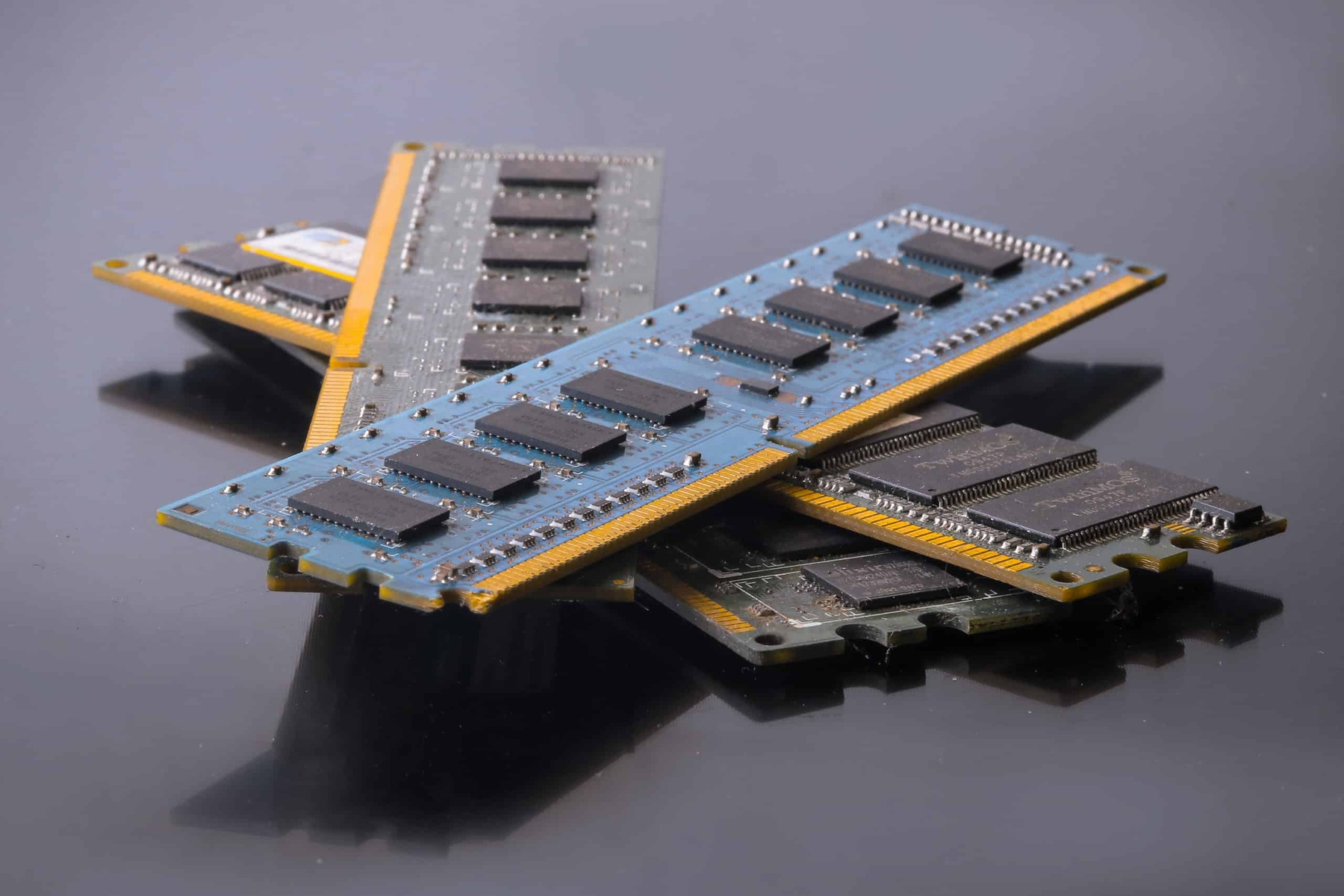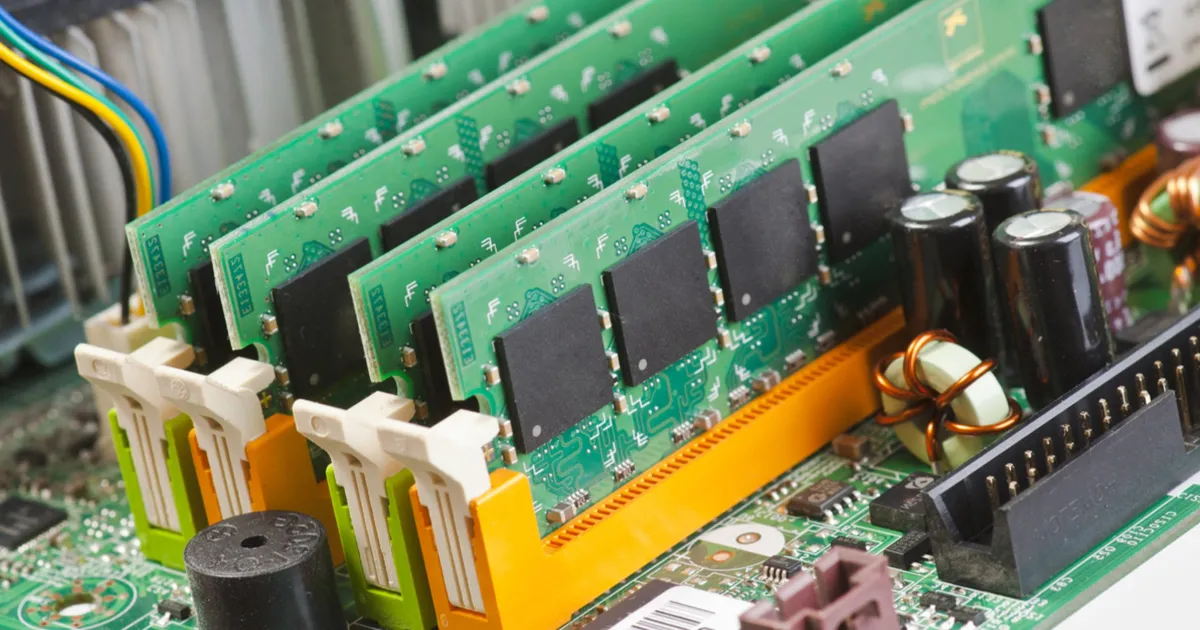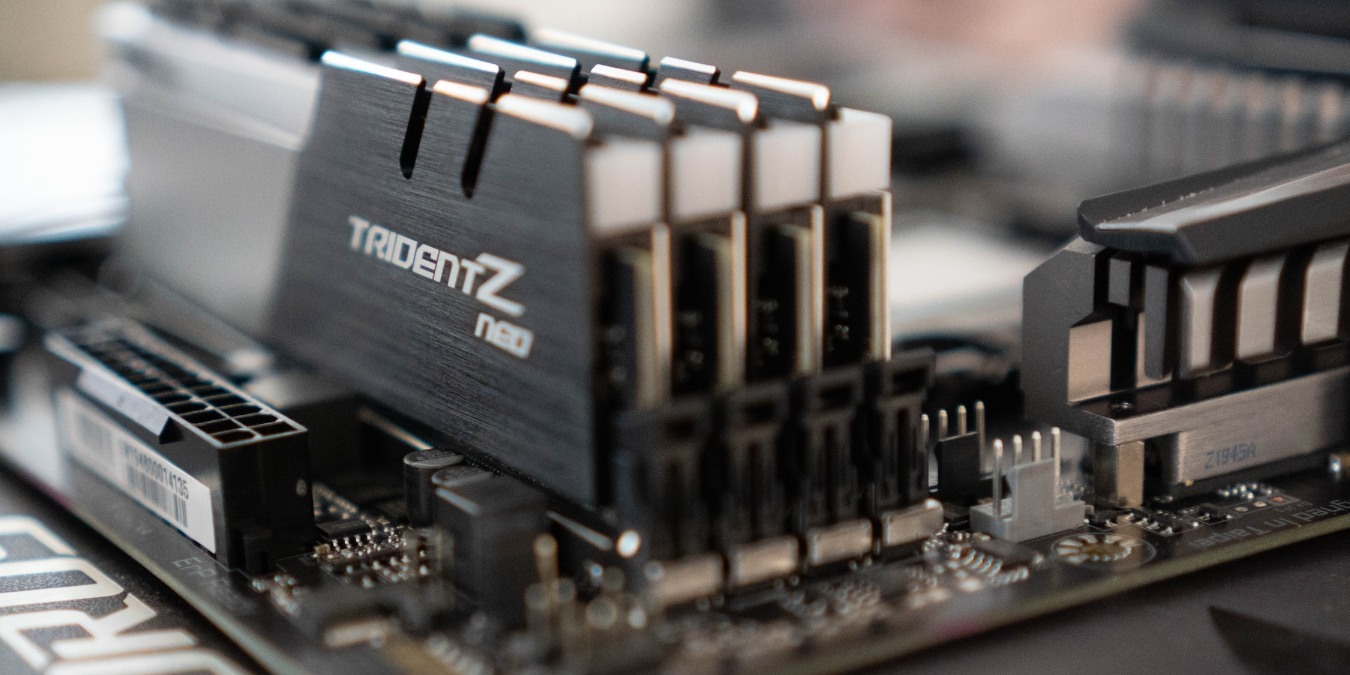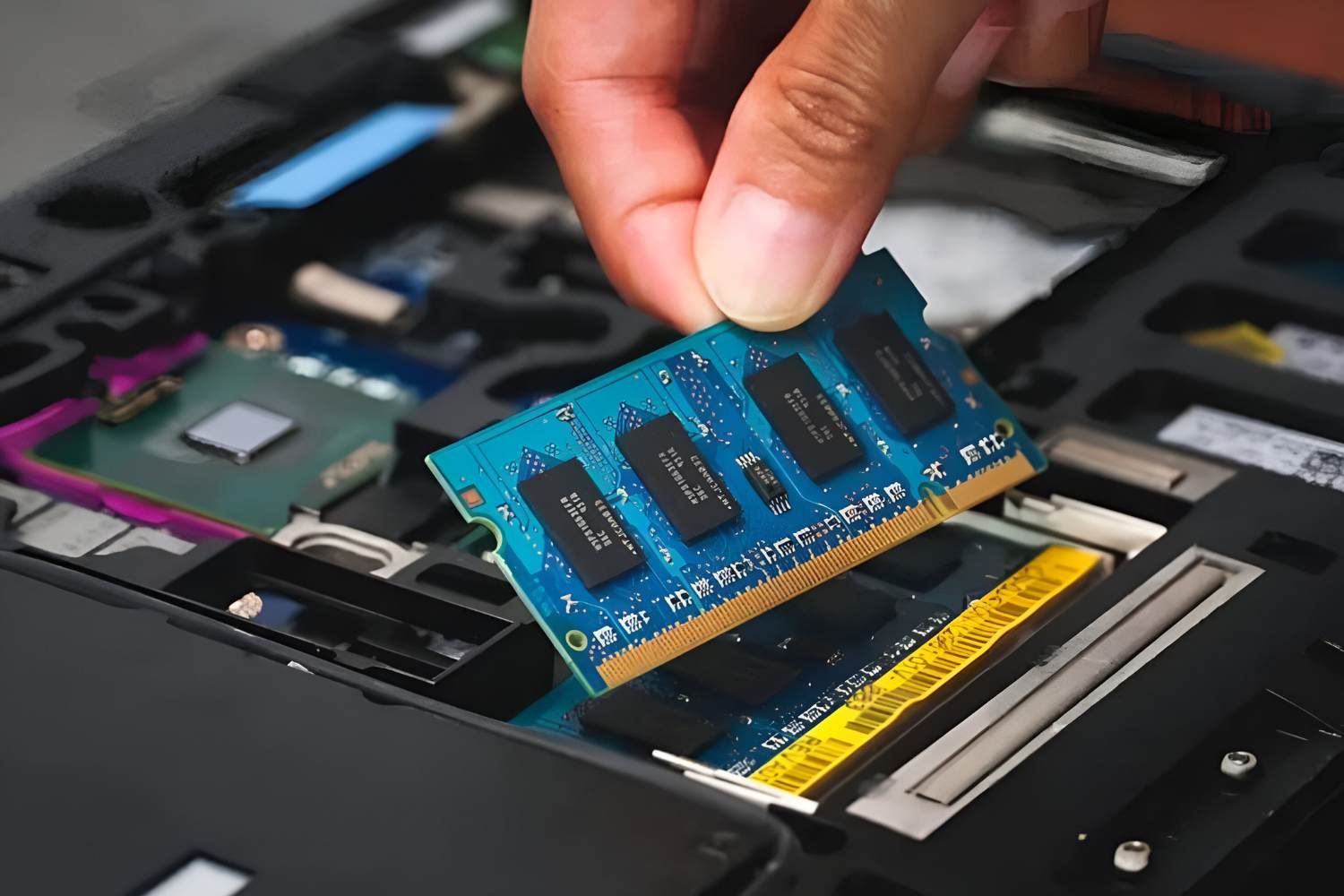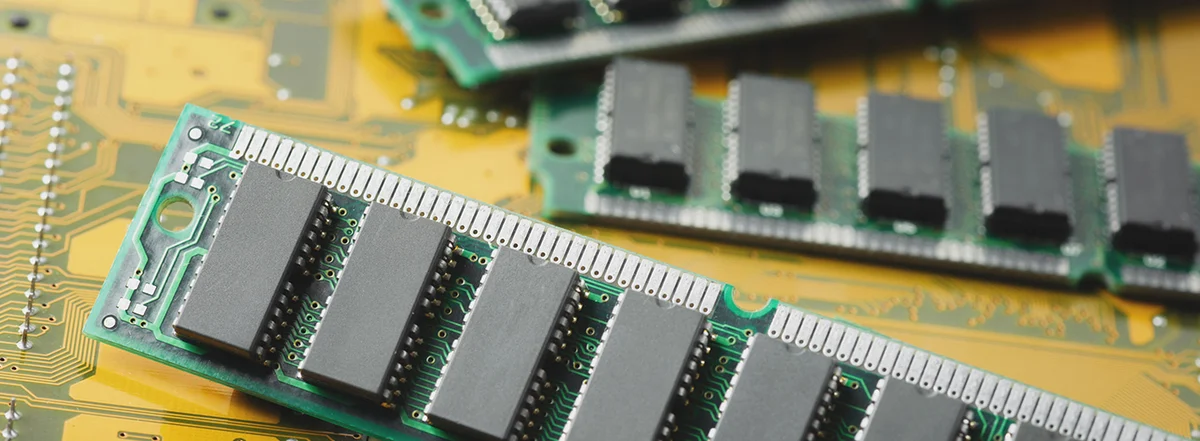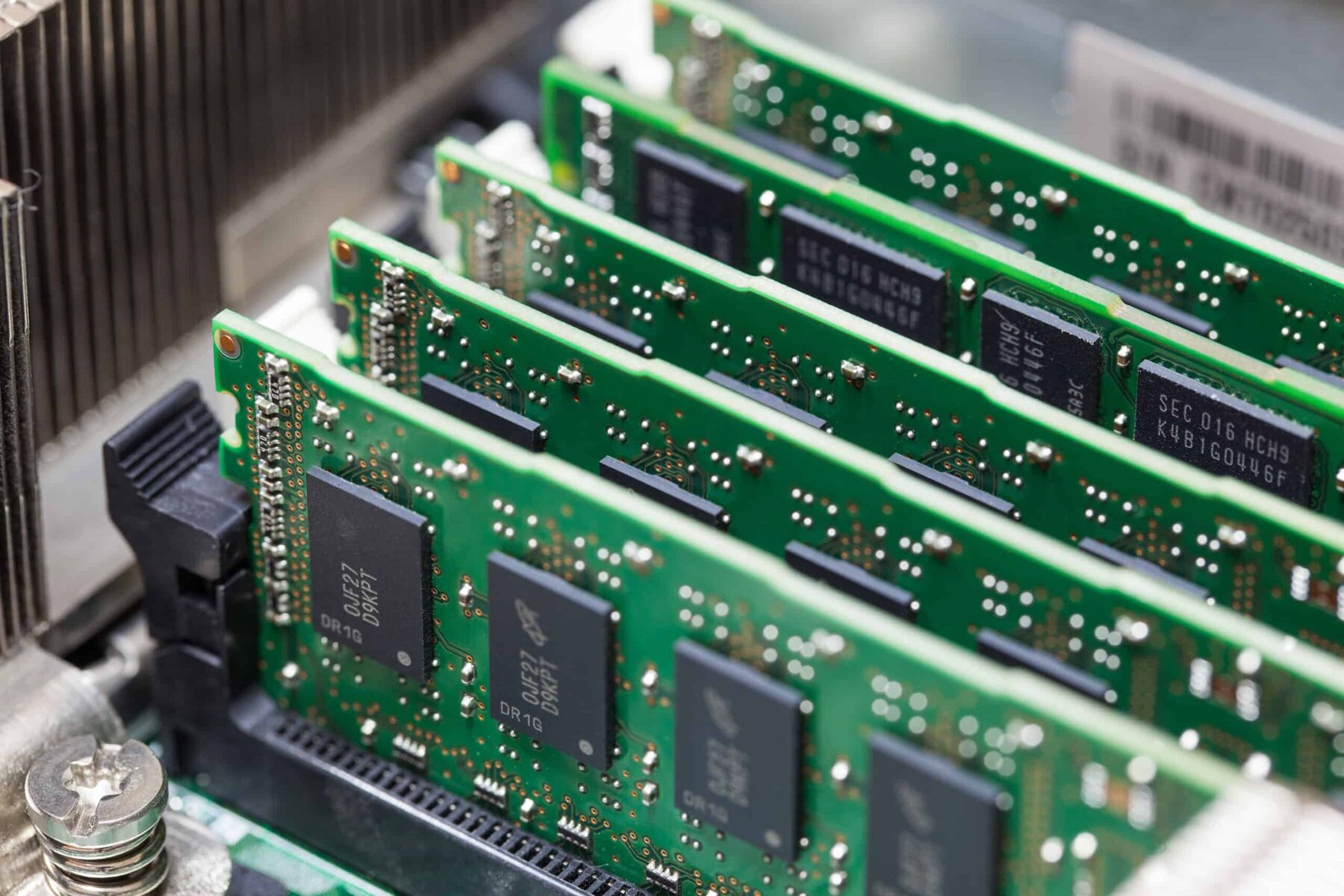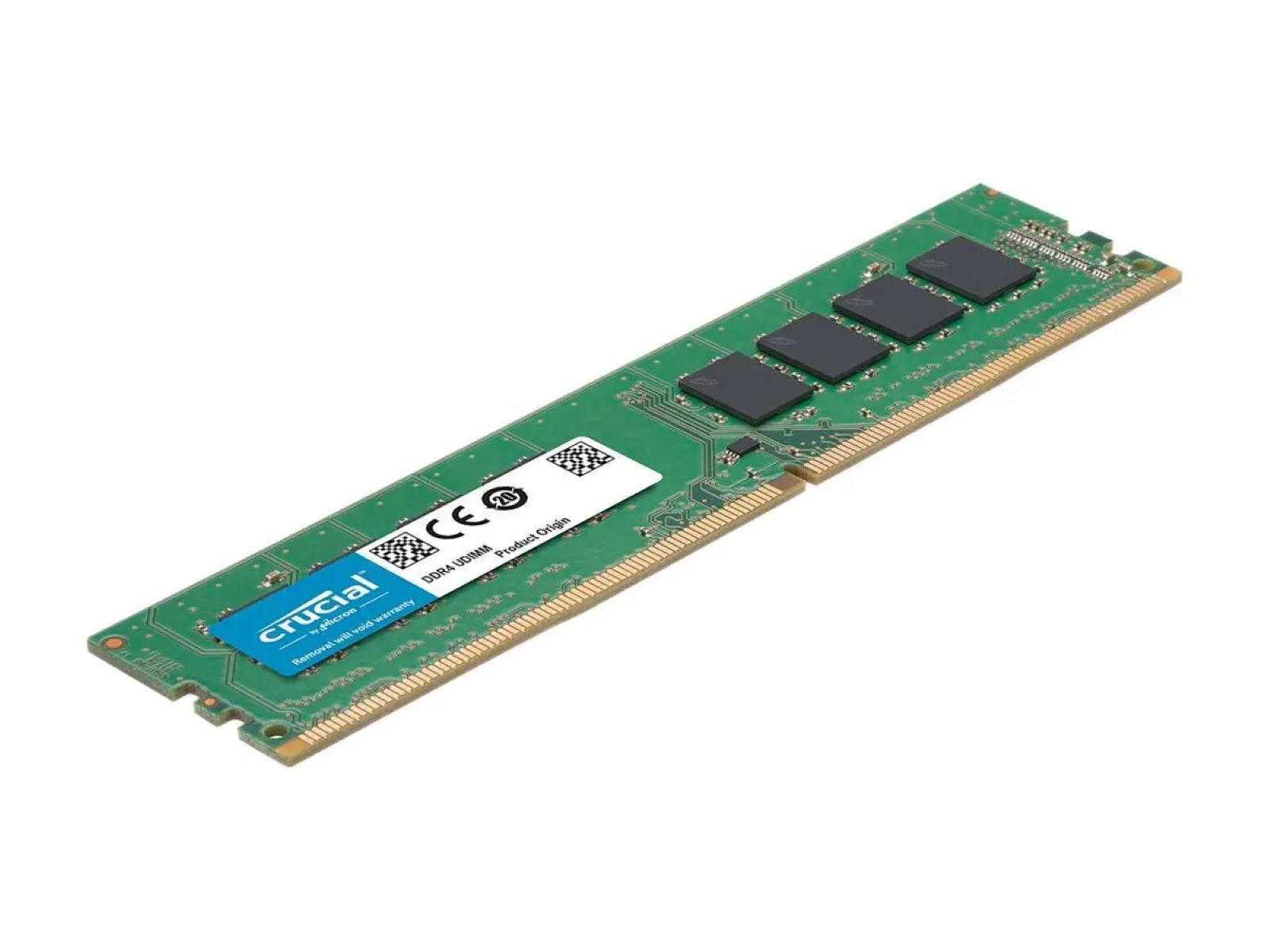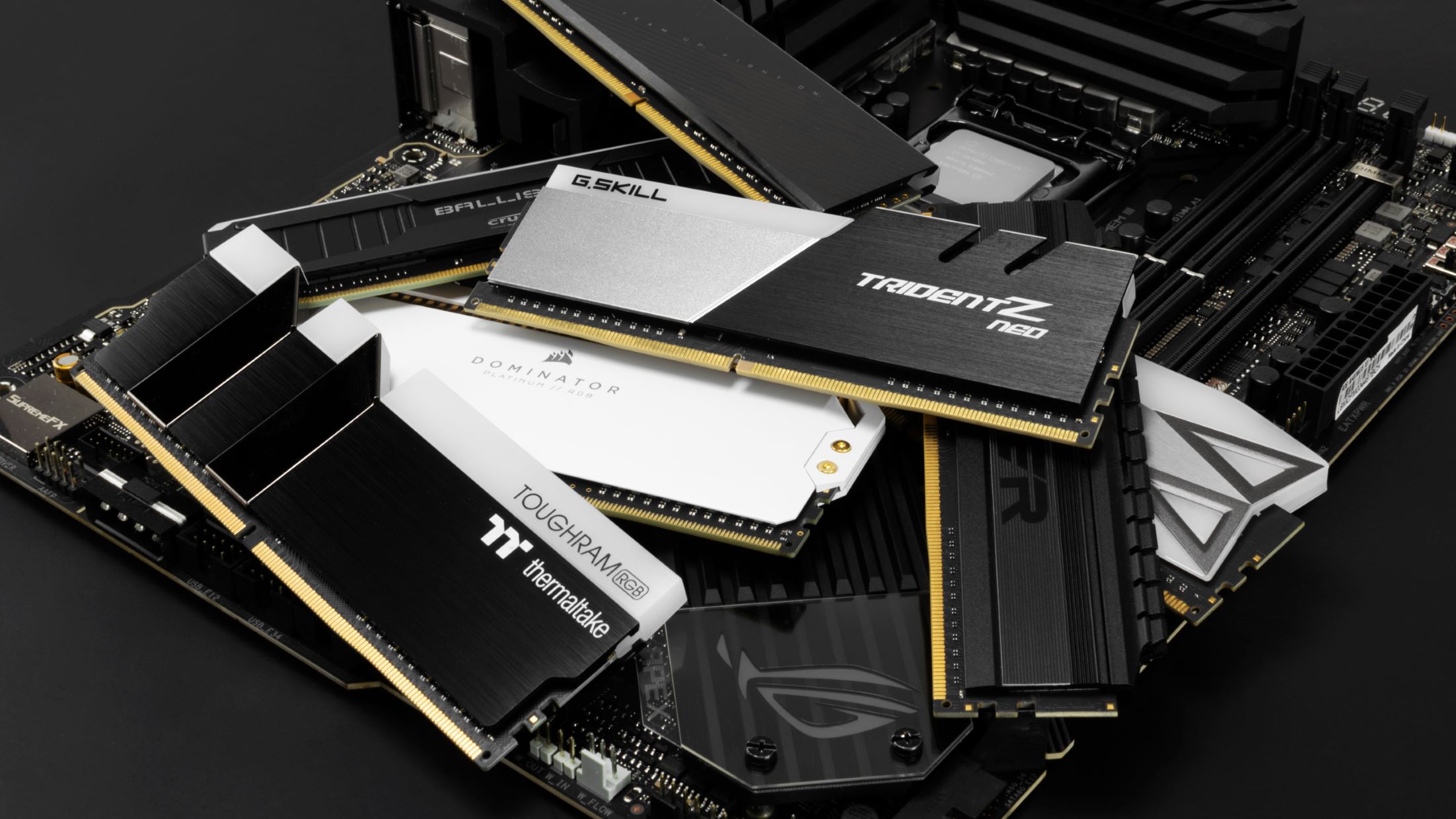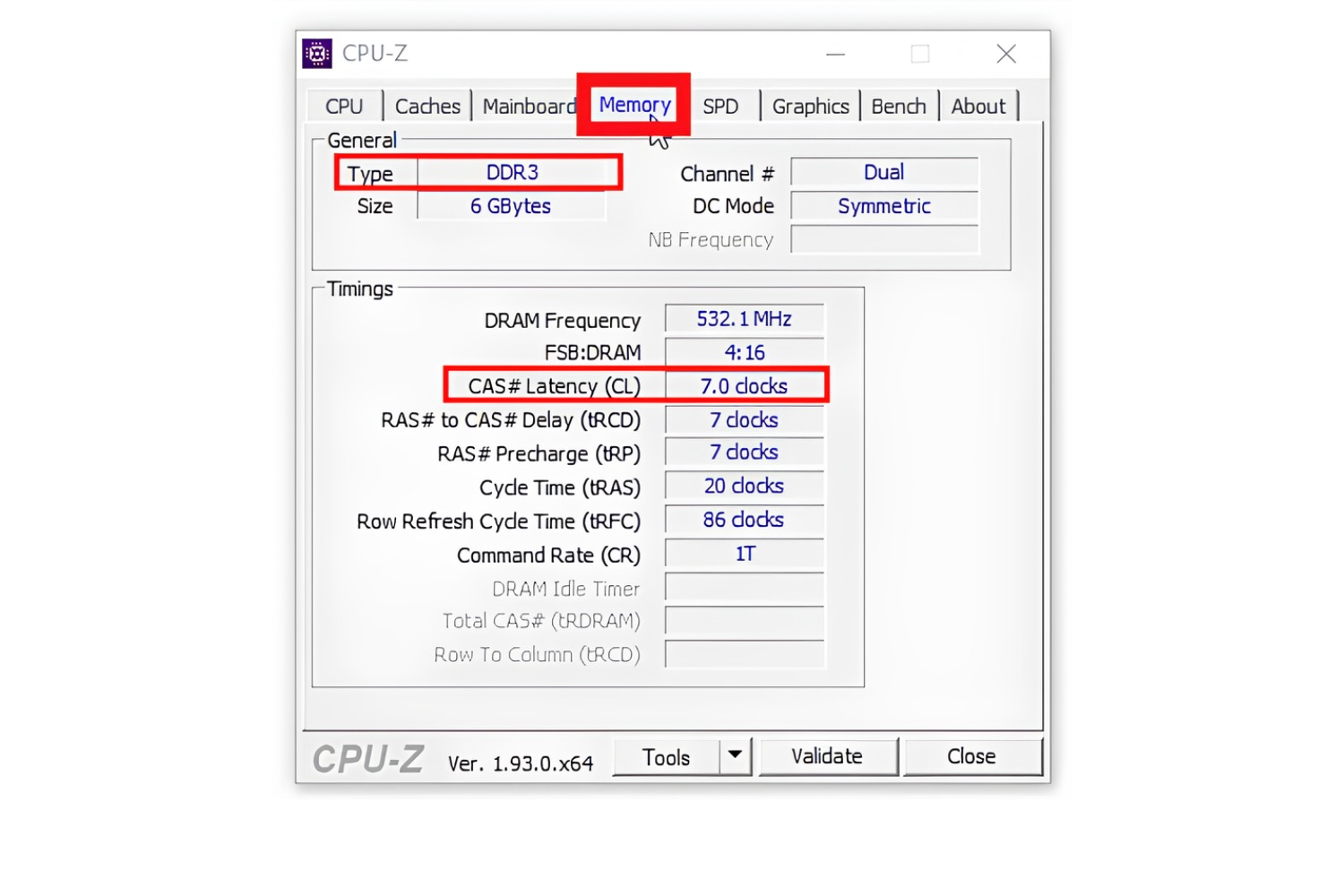Introduction
Welcome to the world of computer hardware, where every component plays a crucial role in determining overall performance. When it comes to RAM, you may have come across the term “CL Number” during your research or while shopping for memory modules. The CL Number, also known as CAS Latency, is an important specification that can greatly impact RAM performance.
But what exactly does the CL Number mean? How does it affect the speed and responsiveness of your computer? In this article, we will explore the intricacies of the CL Number and its significance in the world of RAM.
RAM, or Random Access Memory, is a fundamental component in any computer system. It serves as temporary storage for data that the CPU (Central Processing Unit) can access quickly. The speed at which data can be retrieved from RAM is crucial for the overall performance of your system.
One aspect that determines the speed of RAM is its latency, which refers to the time it takes for the RAM module to respond to a command from the CPU. The CL Number, or CAS Latency, measures this latency and can have a profound impact on the performance of your RAM.
What is the CL Number?
The CL Number, short for CAS Latency, is a timing specification that indicates the number of clock cycles it takes for the RAM module to respond to a command from the CPU. It is one of the key parameters that determine the latency or delay in transferring data to and from the RAM.
CAS stands for Column Address Strobe, which is a signal sent by the memory controller to indicate that a specific column of data is being accessed. Latency, on the other hand, refers to the time delay between the initiation of a command and the moment the RAM module starts to respond.
The CL Number is represented as a numerical value, such as CL14 or CL16, and the lower the value, the better the performance. For example, a CL14 RAM module has a lower latency than a CL16 module.
Each CL Number corresponds to a specific number of clock cycles. For instance, a CL14 RAM module will typically have a latency of 14 clock cycles, while a CL16 module will have a latency of 16 clock cycles. This means that the RAM with a lower CL Number can respond quicker to commands from the CPU.
It’s essential to note that the CL Number is just one aspect of RAM latency, as there are other timing parameters such as tRCD (RAS to CAS Delay) and tRP (Row Precharge Time) that also contribute to overall memory performance. However, the CL Number is often the most prominently advertised latency specification for RAM modules.
Factors Affecting the CL Number
The CL Number of a RAM module is influenced by several factors that can impact its latency performance. Understanding these factors can help you make informed decisions when choosing RAM for your system.
1. RAM Speed: The clock speed of your RAM module plays a significant role in determining the CL Number. Higher clock speeds generally result in lower CL Numbers, indicating lower latency and faster response times. Therefore, faster RAM modules often have lower CL Numbers than their slower counterparts.
2. Memory Architecture: The memory architecture of a RAM module can also affect its CL Number. Different memory configurations, such as single-channel and dual-channel, can have varying CL Numbers. Dual-channel memory configurations generally offer better performance and can potentially have lower CL Numbers compared to single-channel configurations.
3. RAM Technology: Various RAM technologies, such as DDR3, DDR4, and DDR5, have different CL Number specifications. As newer generations of RAM technology are developed, they often come with improved performance and lower latency. Therefore, RAM modules with newer technologies tend to have lower CL Numbers.
4. Overclocking: Overclocking your RAM can impact its CL Number. Overclocking refers to running your RAM module at a higher frequency than its default specifications. While overclocking can provide increased performance, it can also result in higher CL Numbers. It’s important to note that not all RAM modules are designed to handle overclocking, and it can void the warranty or potentially damage the hardware if not done correctly.
5. Quality of RAM Modules: The quality and manufacturing process of RAM modules can also affect their CL Number. Higher-quality modules often have better manufacturing tolerances and can achieve lower latency performance. It’s advisable to choose reputable brands and models known for their quality and reliability.
By considering these factors, you can make a more informed decision when selecting RAM modules with optimal CL Numbers for your specific needs. Keep in mind that the balance between RAM speed, latency, and overall system performance is crucial, and it’s essential to find the right balance that suits your workflow and budget.
How to Interpret the CL Number
Interpreting the CL Number can be confusing if you’re not familiar with RAM specifications. However, it’s essential to understand the significance of this number to make an informed decision when purchasing RAM modules for your system. Here’s how you can interpret the CL Number:
1. Lower CL Number, Better Performance: In general, RAM modules with lower CL Numbers offer better performance in terms of latency and responsiveness. A RAM module with a CL14 specification will have lower latency than a module with a CL16 specification. Therefore, if you’re looking for faster RAM performance, opt for modules with lower CL Numbers.
2. Comparing CL Numbers: When comparing RAM modules, you can use the CL Number as a metric to gauge performance. For example, if two RAM modules have the same clock speed but different CL Numbers, the one with the lower CL Number will typically offer better overall performance and faster response times.
3. Consider Other Factors: While the CL Number is an important specification, it should not be the sole factor in your decision-making process. Other factors such as RAM speed, capacity, and overall system requirements also play a significant role. It’s crucial to find a balance between all these factors to ensure optimal performance for your specific needs.
4. Consider Your Usage: Understanding your specific usage requirements is key to interpreting the CL Number effectively. If you’re primarily using your computer for everyday tasks like web browsing, document creation, and light multitasking, a RAM module with a slightly higher CL Number may not significantly impact your overall experience. However, if you’re engaging in memory-intensive tasks like video editing, gaming, or running virtual machines, investing in RAM modules with lower CL Numbers can lead to noticeable performance improvements.
5. Consult Manufacturer’s Recommendations: It’s always a good idea to consult the manufacturer’s recommendations for your specific hardware configuration. Motherboard manufacturers and RAM vendors often provide compatibility lists or recommended RAM specifications that can help you choose the right modules with optimal CL Numbers for your system.
By considering these factors and interpreting the CL Number in conjunction with other specifications, you can make an informed decision and choose the right RAM modules that offer the best performance for your specific needs.
Impact of CL Number on RAM Performance
The CL Number, or CAS Latency, of a RAM module has a significant impact on its overall performance. Understanding how the CL Number affects RAM performance can help you optimize your system for better speed and responsiveness.
1. Latency and Responsiveness: The CL Number directly affects the latency or delay in transferring data to and from the RAM module. A lower CL Number indicates lower latency and faster response times. This means that the RAM module can quickly respond to commands from the CPU, resulting in improved system responsiveness. Conversely, a higher CL Number means higher latency, which may lead to slower data transfer and slightly increased lag in processing tasks.
2. Multitasking and Memory-Intensive Applications: If you frequently engage in multitasking or use memory-intensive applications like video editing software, 3D rendering tools, or virtual machines, a RAM module with a lower CL Number can significantly enhance performance. These applications often require quick data access and processing, and lower latency provided by a lower CL Number can deliver smoother and more efficient performance.
3. Gaming Performance: Gaming enthusiasts often seek RAM modules with lower CL Numbers to gain an edge in gaming performance. Games rely heavily on data access and processing, and faster RAM with lower latency can reduce loading times, improve game responsiveness, and deliver smoother gameplay. However, it’s important to note that the impact of the CL Number on gaming performance may vary depending on the specific game and overall system configuration.
4. Real-World Performance Differences: The impact of the CL Number on everyday computing tasks such as web browsing, document editing, or basic multimedia playback may not be as noticeable compared to memory-intensive applications or gaming. However, even in these scenarios, a RAM module with lower latency can contribute to a snappier and more responsive user experience, especially during multitasking or when working with large files.
5. Importance of Balance: While a lower CL Number can enhance RAM performance, it’s important to maintain a balance with other RAM specifications such as speed and capacity. Opting for extremely low latency modules may come at the expense of higher costs or lower capacity options. It’s crucial to assess your specific needs, budget, and overall system requirements to find the right balance that maximizes performance without sacrificing other essential factors.
In summary, the CL Number plays a crucial role in determining RAM performance by affecting latency and responsiveness. Lower CL Numbers generally result in lower latency and faster response times, benefiting tasks such as multitasking, memory-intensive applications, and gaming. However, it’s important to consider the overall system configuration and find the right balance of RAM specifications to optimize performance based on your specific needs.
CL Number and Overclocking RAM
Overclocking RAM involves pushing the memory module beyond its rated specifications to achieve higher speeds and potentially improve overall performance. When it comes to overclocking RAM, the CL Number has a direct impact on stability and the achievable results.
1. Stability Concerns: Overclocking RAM can stress the memory controller and other components, potentially leading to instability if not done carefully. Lowering the CL Number while overclocking can put additional strain on the system and may negatively impact stability. It’s important to find a balance between achieving higher clock speeds and maintaining a reasonable CL Number to ensure stability during overclocking.
2. Impact on Performance: Overclocking RAM can result in increased performance by allowing higher data transfer rates. However, lowering the CL Number while overclocking may not necessarily yield significant performance gains. The primary benefit of overclocking RAM lies in increasing the clock speed, while the CL Number primarily affects latency rather than raw bandwidth. It’s important to assess the trade-off between higher clock speeds and potentially higher CL Numbers to determine the optimal balance for your desired performance goals.
3. Finding the Right CL Number: When overclocking RAM, finding the right CL Number becomes crucial. Lowering the CL Number can offset any potential latency increase resulting from higher clock speeds, leading to improved overall performance. However, achieving a lower stable CL Number while overclocking depends on the specific RAM modules and their capability to handle tighter timings. It may require experimentation and testing to find the optimal CL Number that balances stability and performance gains.
4. Memory Controller Limitations: The capabilities of the memory controller on your motherboard can also limit how low you can set the CL Number while overclocking RAM. Some memory controllers may not support extremely tight timings at higher clock speeds, making it challenging to achieve both low CL Numbers and high clock speeds simultaneously. It’s essential to be aware of the limitations of your memory controller when overclocking RAM.
5. Cooling Considerations: Overclocking RAM generates more heat due to the increased power consumption and potentially higher voltage settings. Proper cooling becomes crucial to maintain system stability and prevent damage to the RAM modules or other components. Investing in a reliable cooling solution, such as adequate airflow or dedicated RAM coolers, can help manage temperatures and ensure optimal performance during overclocking.
When considering overclocking RAM, it’s essential to approach it with caution and fully understand the potential risks involved. Lowering the CL Number while overclocking can enhance performance, but finding the right balance between clock speeds, CL Number, and stability is key. Experimentation, proper cooling, and thorough stress testing are essential to ensure the best results while safeguarding the integrity of your system.
Recommended CL Numbers for Different Purposes
When selecting RAM modules, it’s important to consider the specific purpose or usage scenario to ensure optimal performance. Different tasks and applications have varying demands on RAM, and choosing the right CL Number can make a noticeable difference. Here are some recommended CL Numbers for different purposes:
1. Everyday Computing: For everyday tasks like web browsing, email, and document editing, a CL Number between 14 and 16 is recommended. The slight latency difference between these CL Numbers is unlikely to have a significant impact on everyday computing tasks, while still providing a good balance between cost and performance.
2. Gaming: Gamers often benefit from lower latency to maximize responsiveness and reduce any potential input lag. For gaming, a CL Number of 14 or lower is recommended. Lower CL Numbers help ensure smooth gameplay and minimize delays, especially in fast-paced and competitive gaming scenarios.
3. Content Creation and Multimedia Editing: Professionals working with resource-intensive applications like video editing software, 3D rendering, or audio production can benefit from lower latency. A CL Number of 12 or lower is recommended as it can help reduce processing delays and provide a more efficient workflow.
4. Virtual Machines and Server Applications: Running virtual machines or server applications can benefit from RAM modules with lower latency to improve overall stability and performance. A CL Number of 10 or lower is recommended for these scenarios, allowing for faster data access and efficient multitasking capabilities.
5. Overclocking Enthusiasts: Overclocking RAM enthusiasts who aim to push their systems to the limit can opt for RAM modules with extremely low CL Numbers. CL Numbers of 10 or even lower can be achieved with specialized overclocking RAM modules. However, it’s important to note that achieving stable operation at these tight timings may require advanced knowledge and techniques.
Remember that these are general recommendations, and the optimal CL Number for your specific needs may vary. It’s essential to consider other factors such as RAM speed, capacity, budget, and overall system requirements when selecting RAM modules. Checking the manufacturer’s recommendations or consulting experts in the field can also help guide you in selecting the ideal CL Number for your specific usage scenario.
Conclusion
Understanding the importance of the CL Number in RAM modules is crucial for optimizing system performance and selecting the right memory for your specific needs. The CL Number, or CAS Latency, measures the latency or delay in transferring data to and from the RAM module. A lower CL Number indicates lower latency and faster response times, while a higher CL Number indicates higher latency and potentially slower performance.
Factors such as RAM speed, memory architecture, RAM technology, and overclocking can all influence the CL Number and its impact on performance. It’s important to find a balance between achieving lower latency and considering other RAM specifications like speed, capacity, and overall system requirements.
For different purposes, recommended CL Numbers vary. Everyday computing tasks like web browsing and document editing can benefit from CL Numbers between 14 and 16. Gamers seeking optimal performance should consider CL Numbers of 14 or lower, while professionals working with content creation and multimedia editing may benefit from CL Numbers of 12 or lower. Running virtual machines or server applications may require CL Numbers of 10 or lower to ensure stability and efficient multitasking.
Overclocking RAM enthusiasts should pay close attention to the CL Number when pushing their systems to the limit. Achieving stable operation with extremely low CL Numbers may require advanced techniques and knowledge.
By considering these recommendations and understanding the impact of the CL Number on RAM performance, you can make informed decisions when selecting RAM modules and optimize the speed, responsiveness, and efficiency of your computer system.







